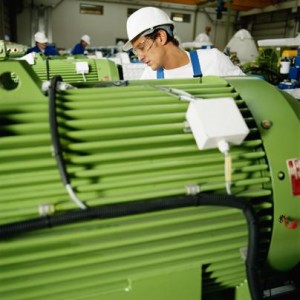Maintenance supervisors can boost productivity?
The job of maintenance supervisors is to get the maintenance work completed on time, on budget and safely! They can be popular. They can be great communicators. They can be inspired trainers. They can be great repair people. But these things alone do not make successful maintenance supervisors.
They are not successful maintenance supervisors unless they can keep the machines running, the fleet rolling and the occupants warm in the winter.
When does an active supervisor look like when he is no longer bogged down in an office doing paperwork? Active supervision occurs when a supervisor spends substantial time on the shop floor helping workers solve problems. As strange as it might sound, on the psychological level a supervisor might have to be both mother (nurturing and supportive) and father (strict and tough) to members of the crew.
Active supervision encompasses several roles:
• Ongoing performance monitor: The supervisor knows how long each job should take and checks it periodically throughout the day. A four-hour job issued in the morning should be done by the lunch break. When the jobs fall behind, the experienced supervisor thinks about how best to intervene. In some cases it might be logistical help, helping with equipment, or providing guidance about how to proceed.
• Paperwork compliance officer: The accuracy of all analysis is derived from the work order. If the work order is complete and accurate then decision-making and root cause analysis become dramatically easier. Supervisors audit paperwork and return it when it is deficient. They should always look at work orders on the floor and ensure entries are being made at the same time as the activity occurs, not at a later time.
• Obsessive-compulsive PM monitor: A supervisor reinforces the rule: “Do the PM as it is written.” A related issue is PM compliance. If a worker does not have the task list in-hand when they are doing the PM, how do we know what was actually done? The supervisor ensures workers carry the task list when completing PMs.
• Teacher, Mentor: The supervisor should either be continuously training or directing the training of crew members. Everyone has areas that they are better at and areas that they aren’t so familiar with.
The easiest crew to schedule is the one where everyone can do everything. The effective supervisor should be reviewing the schedule every day and looking for training opportunities. These can be formal training sessions or letting the trainee ‘help’ an experienced hand.
• Quality control officer: The supervisor is responsible for the overall quality of all work performed in his or her shop. Where there are quality issues the supervisor determines the cause of the problem which could be rooted in several areas: lack of knowledge or skill, lack of aptitude, lack of adequate physical strength or dexterity, a bad attitude, lack of the right tool, lack of the right part, some inadequacy in working conditions, inadequate time, or preoccupation brought about by a problem outside of work.
• Safety officer: The supervisor should intervene any time an employee or visitor performs an unsafe act or is in the shop without the proper personal protective equipment. The supervisor is a champion for safety and makes sure the shop is safe.
• Tidiness cheerleader (5S): The shop must be kept clean for safety, efficiency and morale. All clean-up for individual jobs should be part of, and charged to, the individual job. The supervisor should arrange for periodic clean-up projects to keep the whole area and the yard tidy.
No one said a supervisor’s job is easy. If your goal is to help your maintenance supervisor become more effective, encourage him or her to practice these 11 different roles and they’ll be on their way to significantly improving the productivity of their team.



